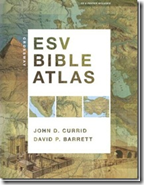A very powerful new Bible software program was released this weekend, with a special introductory sale beginning today. The best introduction is the preview video at the ScrollTag website. You can also get a quick sense for some of the program’s strengths and value from the Q&A below, which is a mixture of information from the website and my own reflections.

What is ScrollTag, briefly?
ScrollTag is a Bible program which enables users to organize all of their notes, markings and tags on Biblical texts. Notes are tagged directly onto Hebrew, Greek, or English words, phrases or entire verses to allow easy retrieval and revision…
How does ScrollTag differ from Logos, Accordance, and other Bible programs?
ScrollTag has been designed to meet a need which we saw no other Bible programs meeting adequately (Tagging, Organizing, Block Diagramming and Marking the text). ScrollTag does not intend to directly compete with these other major software packages which focus on other strengths. We intend to keep our focus on what we do well, and not branch out to try to do everything.
The answer to this next question is increasingly important to me as my children get older and begin serious Bible study.
How many users can share a single copy of ScrollTag?
ScrollTag is licensed per household…
What does this program have to do with biblical places?
First, anything that helps us to understand the Bible better gets us excited. We love the Bible first and the “places” second. Next, the program includes three very high-resolution satellite maps. The high resolution allows you to zoom in and use the maps for a variety of purposes.
Third, we have known the author of this program for many years. The programming genius is immediately obvious to those who watch the demo and read the notes, but we can attest to his love for people, his passion to know God’s Word, and his absolute integrity. We marvel at the skill and hard work that he has used over the years to create ScrollTag.
Why does the program cost $150?
The introductory special reduces the cost to $125. That includes paying required royalties for the various English, Hebrew, and Greek translations (e.g., USB4, AGNT, NASB, WHM). You can also get just a taste for the amount of work involved by this explanation of the origin of the Greek text that the author did not even end up using.
In addition, ScrollTag includes three high-resolution maps, a Hebrew Chartbook, and a Greek Chartbook. The full name of these books: Charts for the Acquisition of Biblical Hebrew/Greek: A Natural Approach to Language Learning for the Biblical Exegete. These two chartbooks contain a wealth of unique information and are recommended for students with or without ScrollTag (available separately here). The collection is a tremendous value for all that you get.
What can I get for free?
The three satellite maps are available in medium-resolution. The significantly improved Westcott and Hort electronic text is available here. There are also several ways you can enter to win a free copy of ScrollTag.

